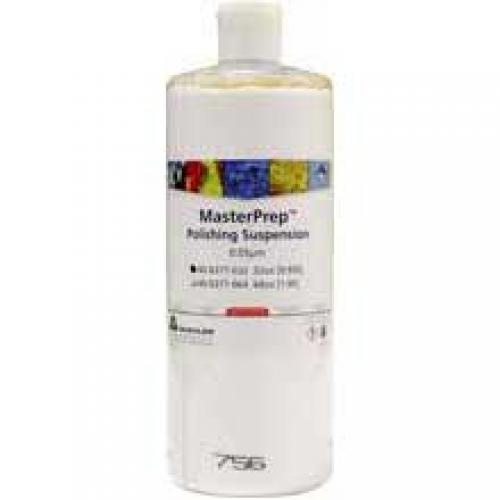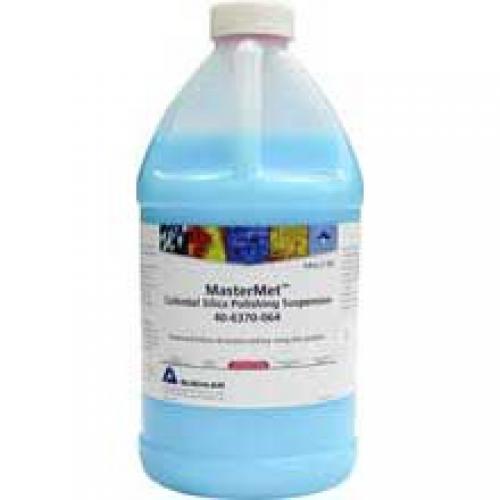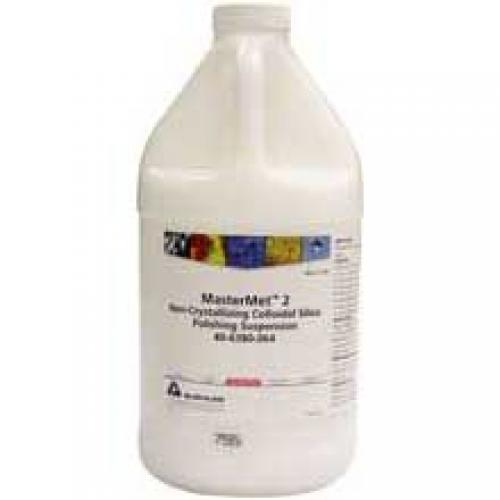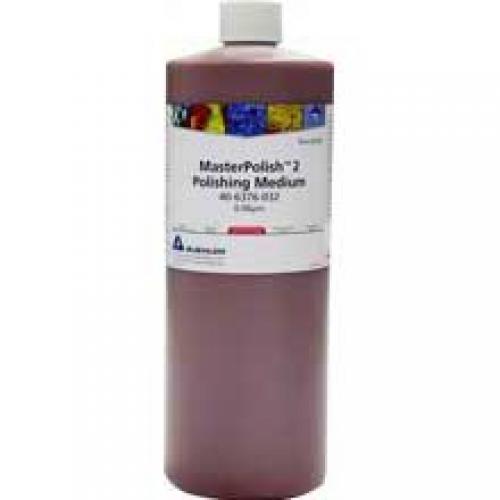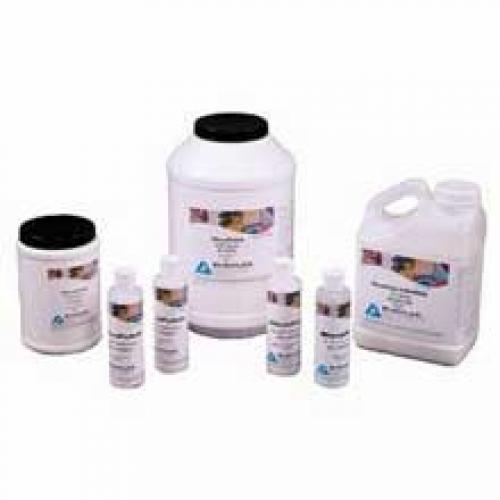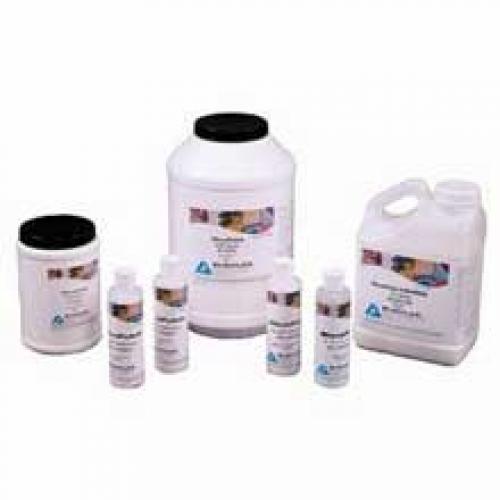Application Note: How to Choose a Final Polishing Compound
We are often asked what final polishing compound provides the best results for sample preparation. This application note describes what we use and why...
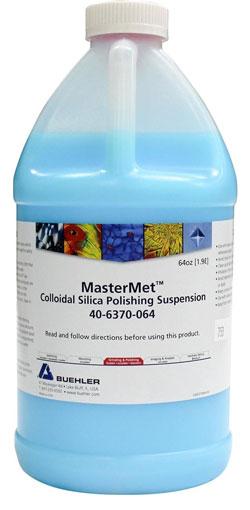 The short answer: it's complicated.
The short answer: it's complicated.
The choice of final polishing compound depends on the final desired result and the materials or material combination we are polishing.
Like other grinding and polishing steps, the ultimate goal of final polishes is to remove surface deformation in order to show the desired details.
If your final desired result is microscopic analysis of grains and structure, you may use one final polish. If you are looking at surface information you may desire a different polish.
Below is a quick review of the Buehler polishing compounds we use in our lab and why. For more in depth information or recommendations, please contact us.
Alumina
Alumina (MasterPrep) is probably the most common final polish abrasive. Alumina uses mechanical shear as the method to remove material. Alumina particles have sharp edges, like diamond suspension. The particle size of alumina will depend on the manufacturing process and can be as small as 0.05um.
Alumina can be used for most materials including polymers, PCB’s, semiconductors and raw materials. Alumina is good for final optical inspection.
Colloidal Silica
The other most common final polish material is colloidal silica (MasterMet). Colloidal silica particles come in amorphous forms and work via a chemo-mechanical process. Silica particles do not have sharp edges and work by a gentle method sweeping across the surface. Due to the higher pH of the suspension the top layer of material is dissolved into the solution.
Colloidal silica lends itself to looking at surface finishes where you need higher magnification SEM inspection.
Crystallizing (MasterMet) vs. Non-crystallizing (MasterMet2) Colloidal Silica
Final polishing colloidal silica suspensions tend to evaporate quickly and form crystals on a polished surface that are difficult to remove. We recommend that samples are rinsed during the last few seconds of the polishing process and then cleaned immediately after polishing action with plenty of water to prevent recrystallisation. A further rinse with IPA may also help. Non-crystallizing colloidal silica offers a wider operating window for cleaning which is advantageous.
Non-crystallizing solution (MasterMet 2) are thus better for fully automated systems with burst dispensers, for polishing very hard materials that demand long polishing times or vibratory polishing methods (especially for EBSD) that may require a multiple hour polishing step.
Combination Suspensions
Combination suspensions (MasterPolish) use both alumina and silica to get results. This method is best in mixed material samples that benefit from both polishing methods. An example would be electronic components that can have multiple metals and polymers. In this case, alumina would be the best option for showing porosity or voids/cracks. Silica would work best for microstructural analysis like intermetallic interaction or dendrite growth. Using both together in a combination solution could give you the best performance.
Scroll down to shop for final polishing compounds.
When to Use Alumina Powder Over an Alumina Suspension
The choice of using powders comes down to the sensitivity of your sample to water or if you desire a specific pH to prevent unwanted interactions with your material. Alumina is inherently inert so it is optimal for creating suspensions using non-aqueous carriers like propylene glycol or some light hydrocarbon oils. If the main desire is to control pH, you can mix alumina with deionized water or alkaline water to control the pH. Be aware that mixing alumina with oils or detergents will reduce the polishing effectiveness so steps will take longer.
Alumina powders are available as agglomerated (MicroPolish suspension) and deagglomerated (MicroPolish II powder) versions. Agglomerated alumina tends to clump up when not in use. The clumps break down during the polish step. Agglomerated alumina tends to have a faster removal rate then deagglomerated alumina. Deagglomerated alumina is best for softer materials to prevent the chance that a lump causes unintended surface deformation.
Particle Size Consideration
Using the correct particle size will speed up your polishing process and will prevent large scratches that remain from the previous diamond polishing or SiC grinding step from not being removed. Some people assume that starting at a smaller particle size is good enough and that they can polish through larger scratches. This is not the case. In addition, polishing a sample is waste of material, for both the suspension and polishing pad. In some cases, you may want to two final polish steps with different size particles. For example, one step with MasterPrep to get a purely mechanical polish and a second step with MasterMet 2 to get the best surface finish. This is especially important on cases where surface finish is critical (like EBSD analysis).
Summary
Final polishing steps are both science and “art”. What polish you use and how long you polish is sample and desired results dependent. Reference guides like Buehler’s SumMet guide are a good reference to sue as a starting point.
If you have questions or need assistance with your sample preparation process, please use the form on this page to contact us. Or, give us a call at (408) 436-6336.
Get Application Support
Recent Posts
Buy Final Polishing Compounds
Alumina
MasterPrep Alumina is excellent for minteals, ferrous metals, lowe melting point alloys, carbides, PWBs, precious metals, electronics, polymers and polymer matrix composites.
| Sol-gel alumina suspension |
| 0.05μm |
| ~8.5pH |
| Mechanical polishing action |
Colloidal Silica
MasterMet Colloidal Silica is ideal for metals, minetals, ceramics and polymers.
| Amorphous colloidal silica suspension |
| 0.06μm |
| ~10pH |
| Chemo-mechanical polishing action |
Non-crystallizing Colloidal Silica
MasterMet 2 Colloidal Silica is excellent for metals, minerals, ceramics and polymers.
| Non-crystallizing amorphouse colloidal silica suspension |
| 0.02μm |
| ~10.5 pH |
| Chemo-mechanical polishing action, suitable for automatic dispensing |
Alumina and Colloidal Silica Blend
MasterPolish Final Polish is excellent for most magnesium, cobalt and iron alloys, nickel, and metal matrix composites.
| Blend of high purity alumina and colloidal silica suspension |
| 0.05μm |
| ~9pH |
| Chemo-mechanical polishing action with minimal water content for water sensitive material |
Iron Oxide Suspension
MasterPolish 2 Final Polish is ideal for sapphire, glass, alumina, silicon nitride and metal/ceramic composites.
| Iron oxide suspension |
| 0.06μm |
| ~10pH |
| Chemo-mechanical polishing action |
Agglomerated Alumina
MicroPolish Alumina Suspension offers high removal rates and is good for use on magnesium, lead and their alloys.
| Agglomerated alumina |
| 1μm, 0.3μm, 0.05μm |
| ~8.5pH |
| Mechanical polishing action |
Deagglomerated Alumina
MicroPolish II Alumina Powder offers a better surface finish and is suitable for most minerals and metals.
| High quality deagglomerated alumina |
| 0.3μm |
| ~8.5pH |
| Mechanical polishing action |

